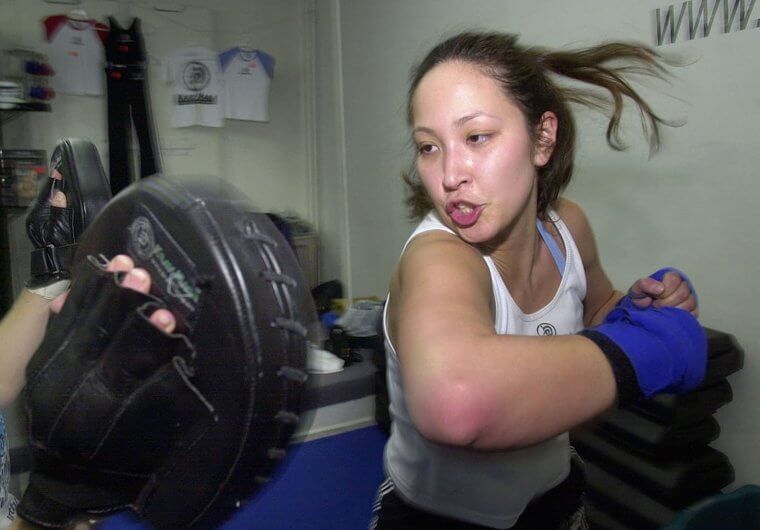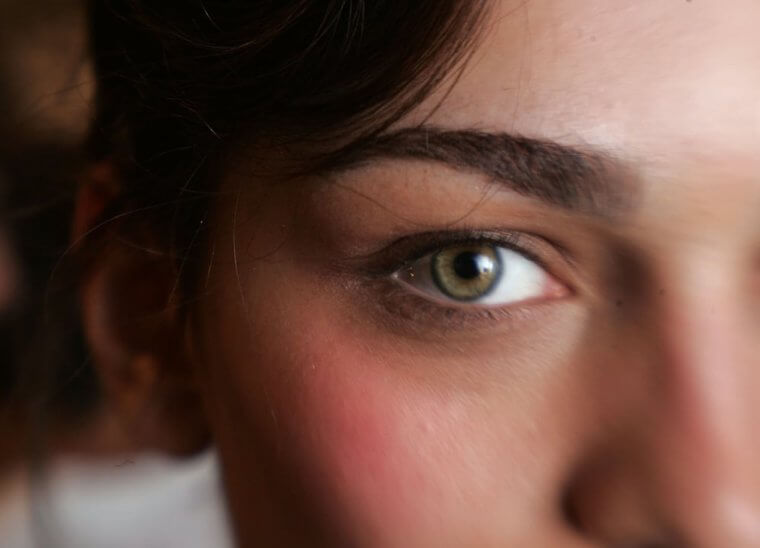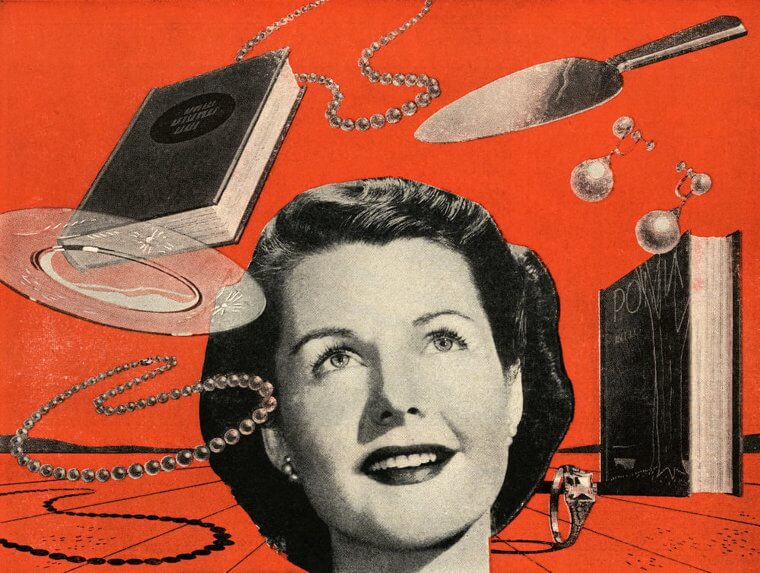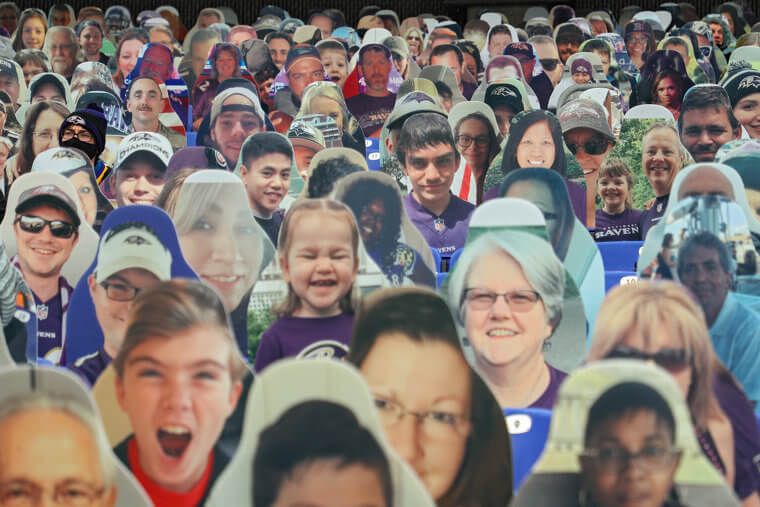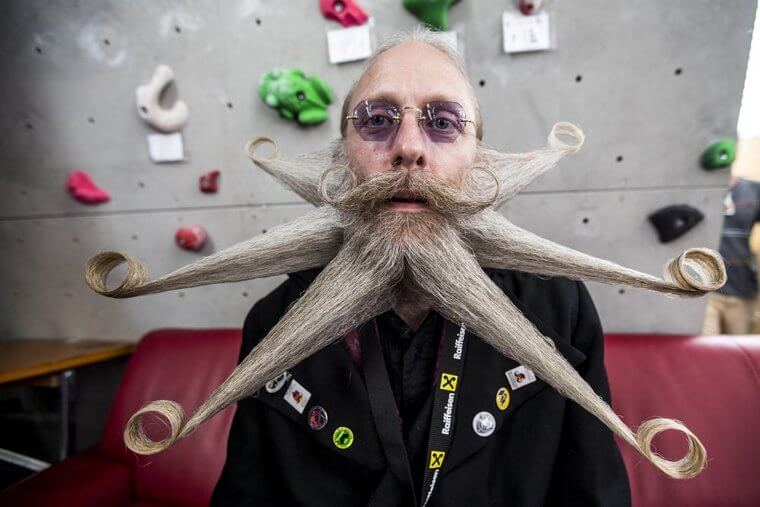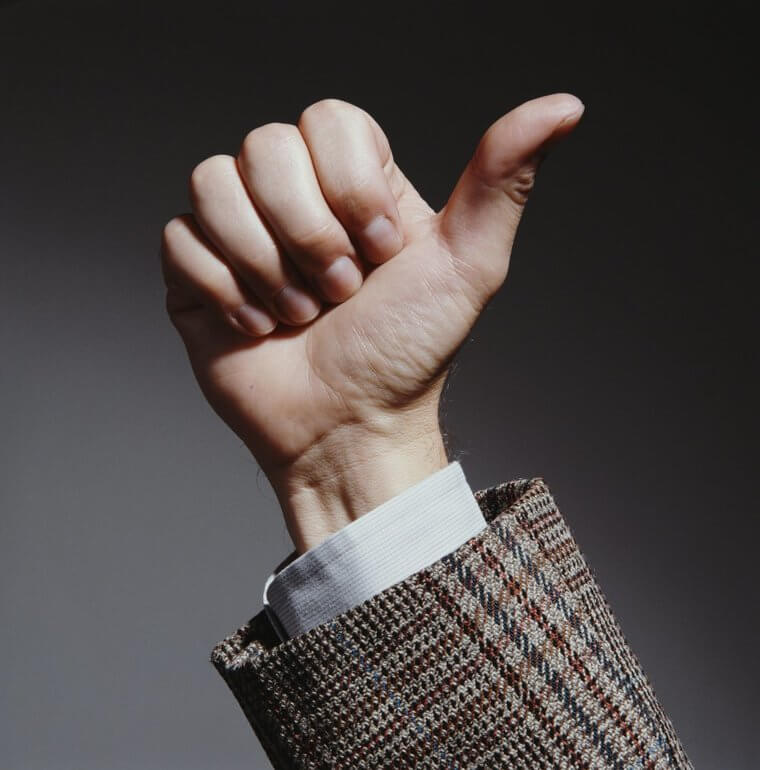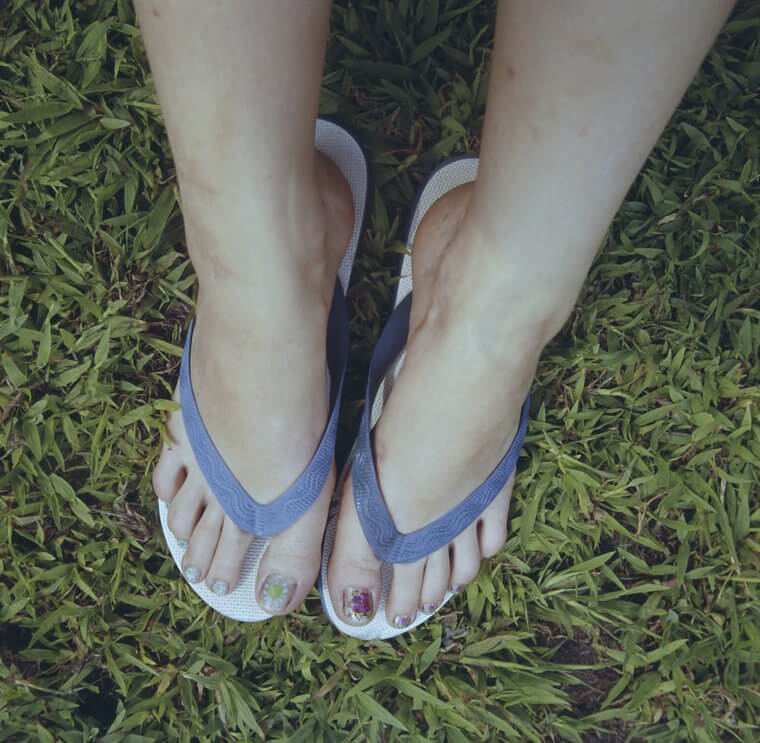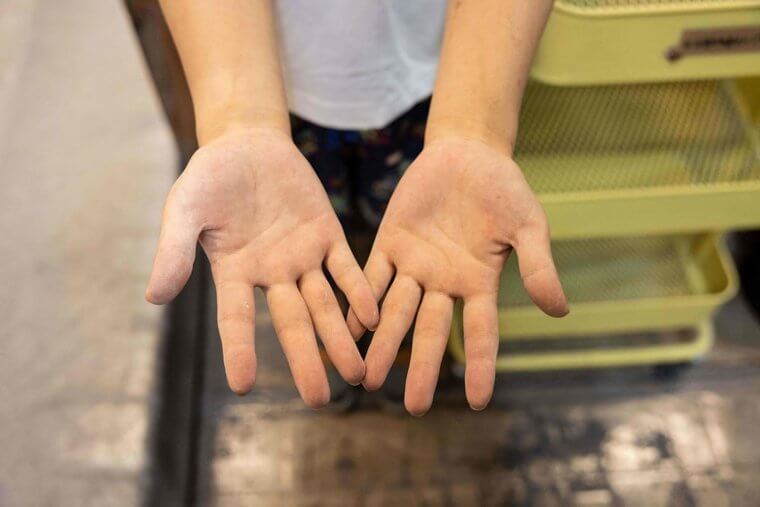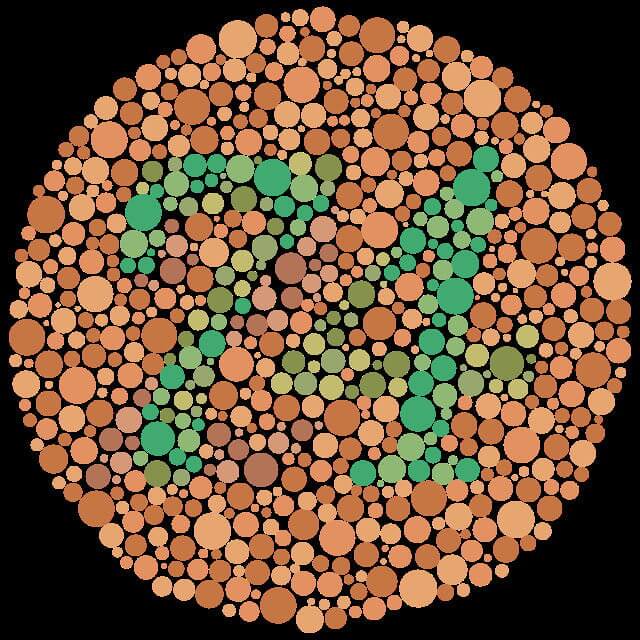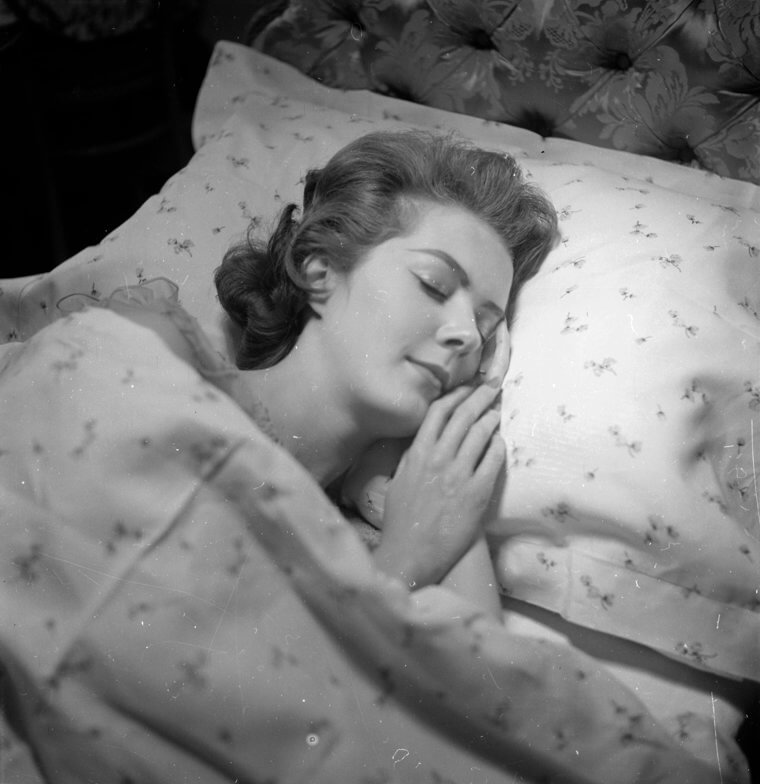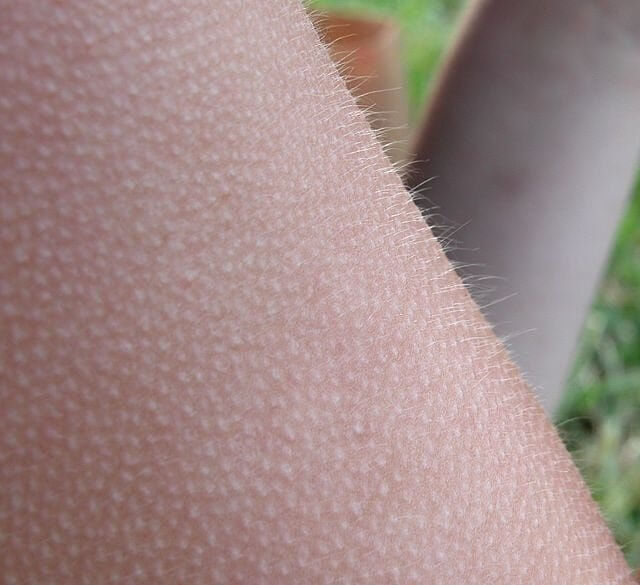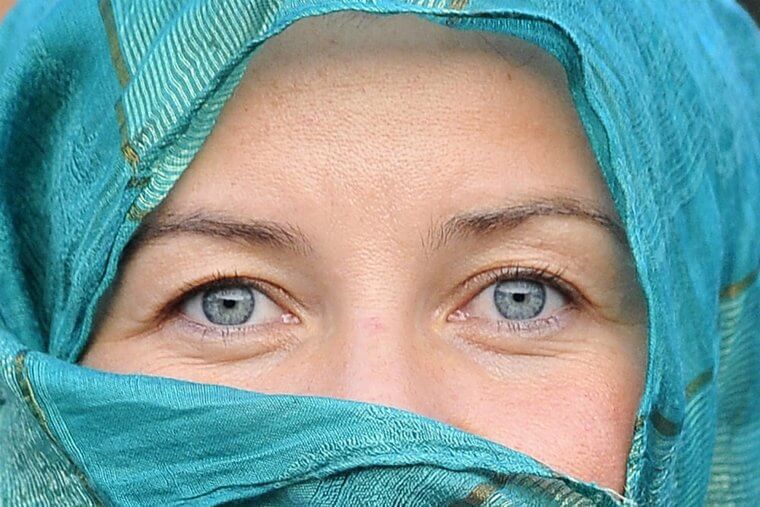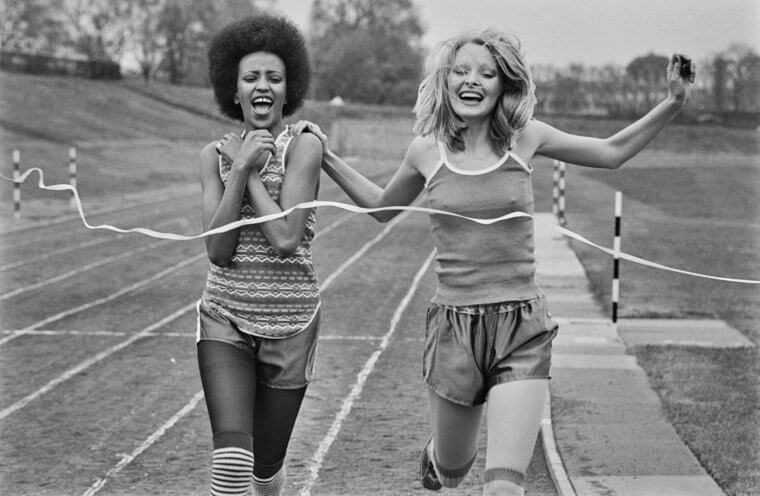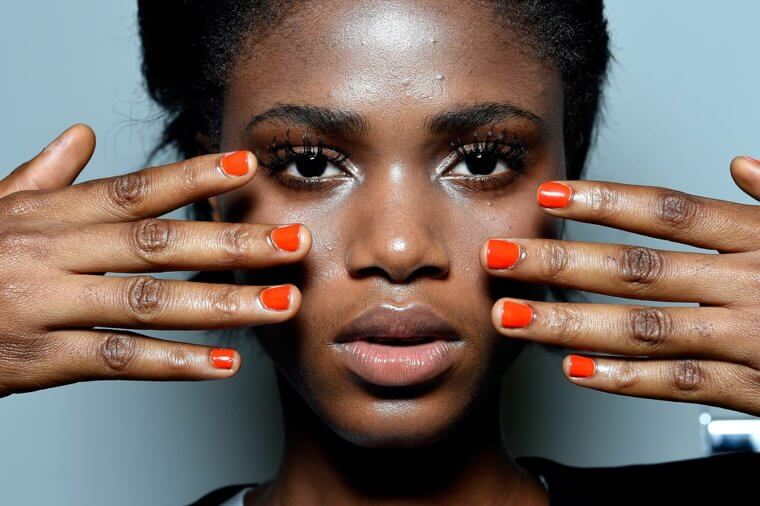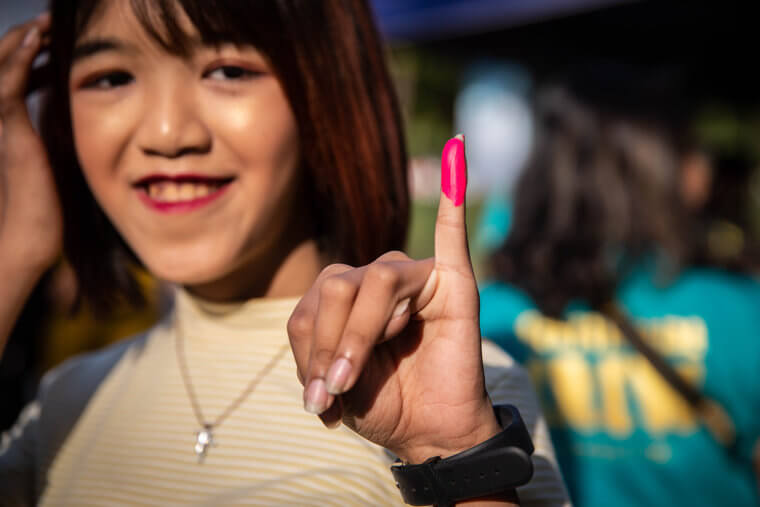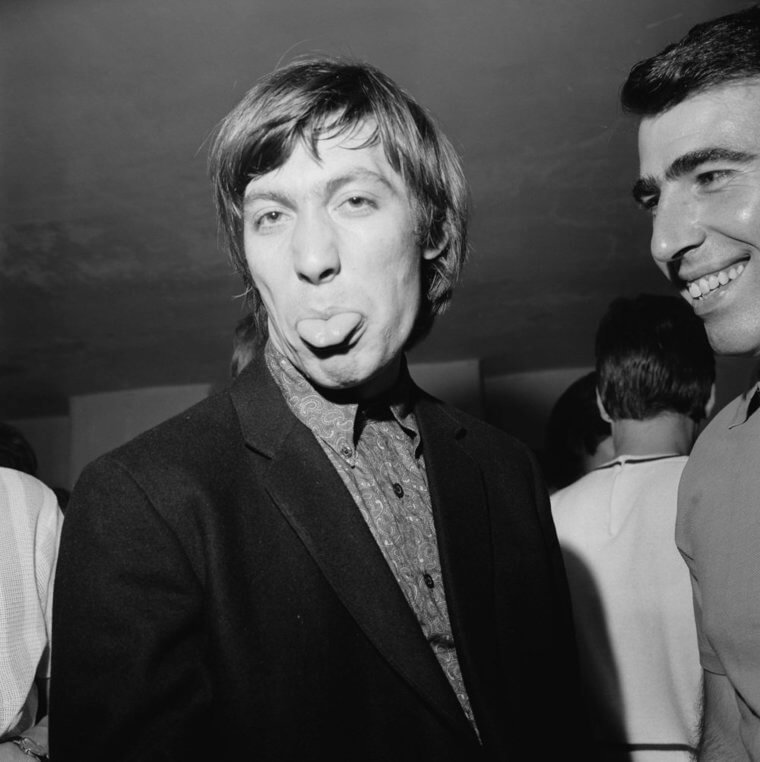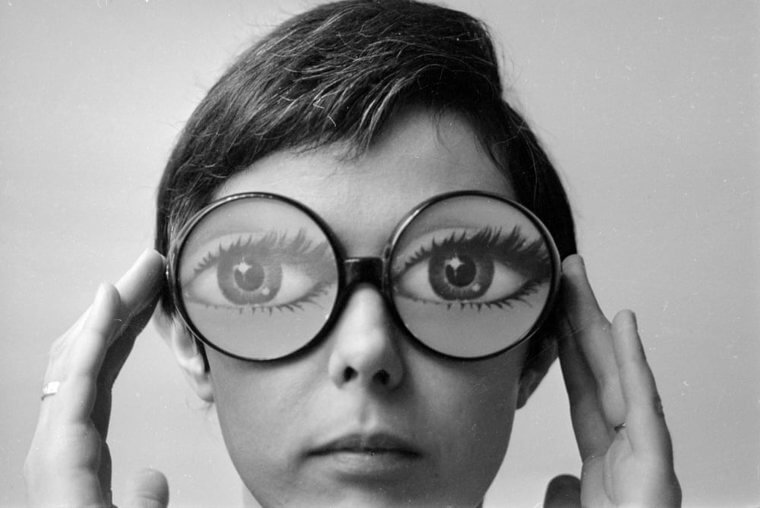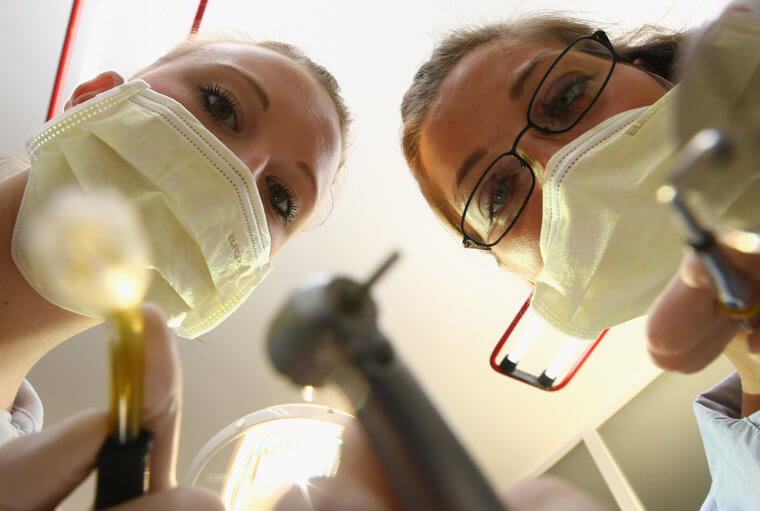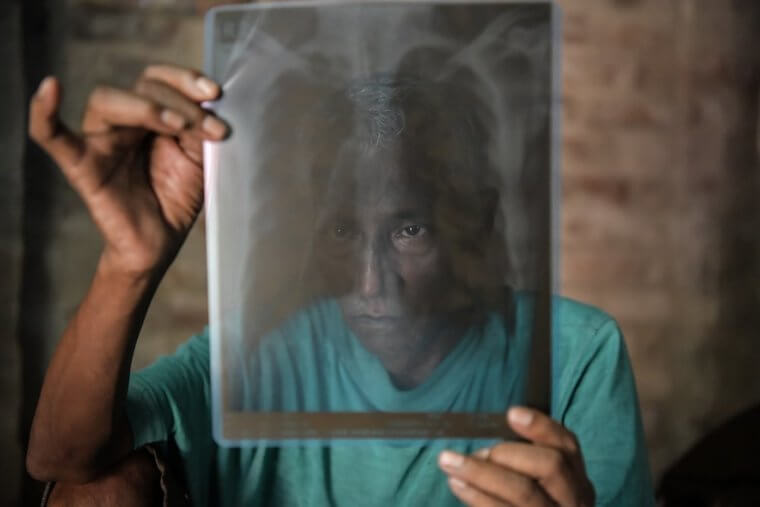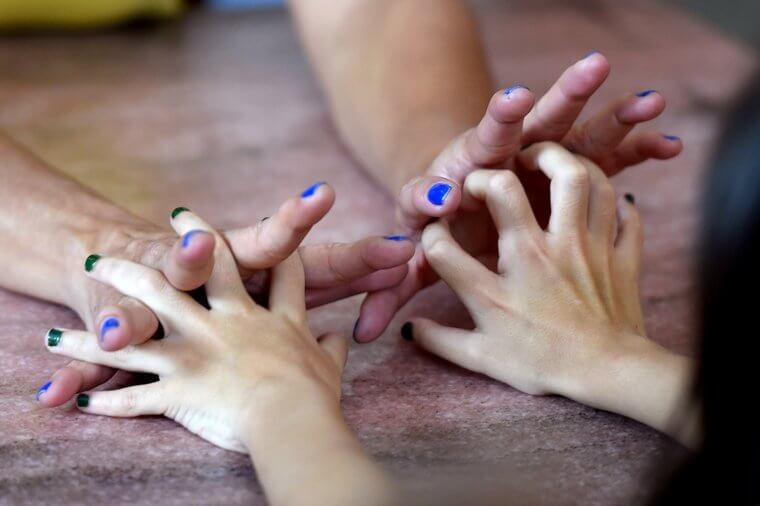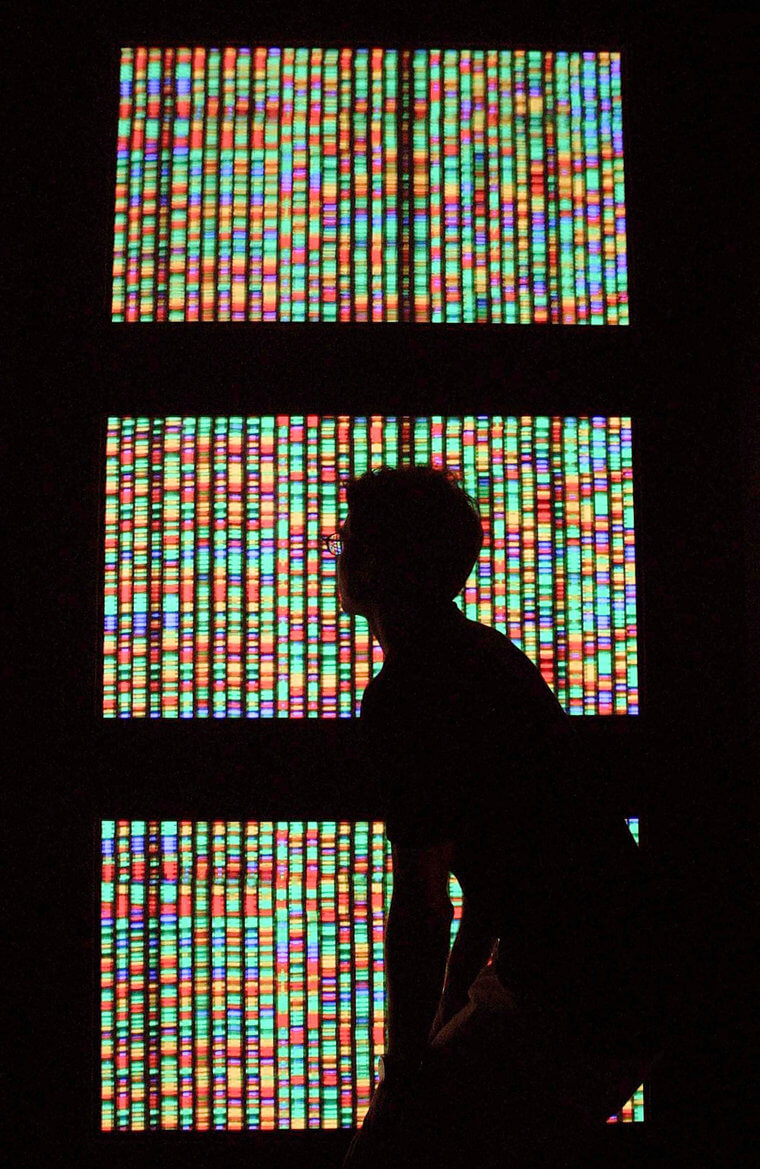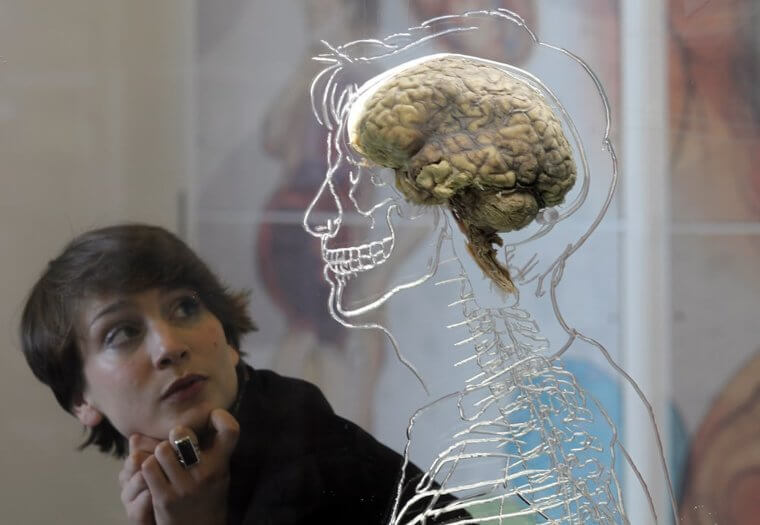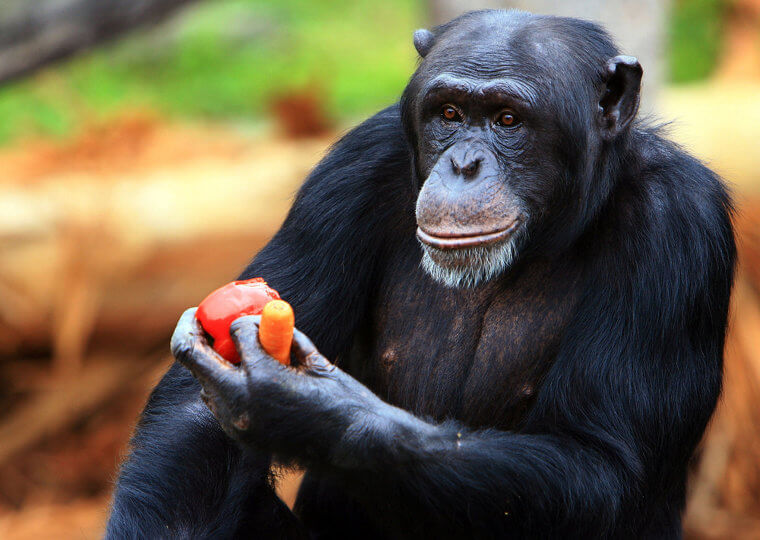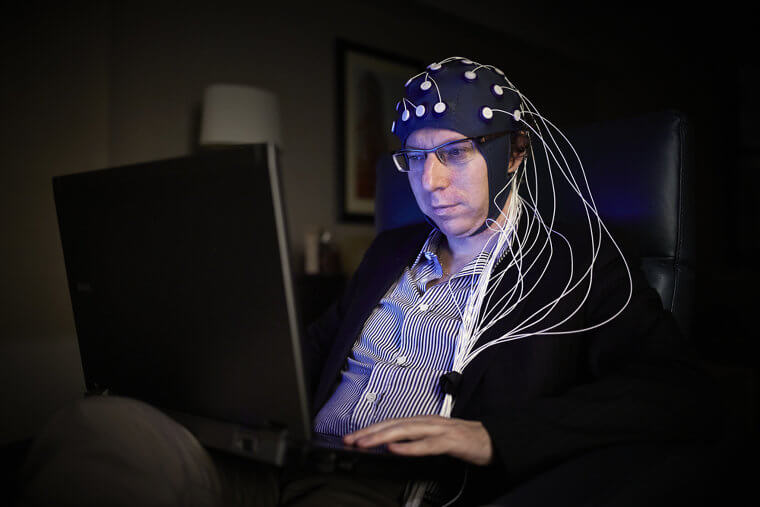Even though we sit in the pilot seats of our bodies, we do not know much about the vehicle we are supposedly controlling. Between our senses, organs, bones, and muscles, there are a plethora of amazing and surprising facts to discover. You may have been living in your body your entire life, but how many of these extraordinary facts were you aware of? Read on and prepare to be fascinated by your own body.
Flexed Biceps Resemble Mice
Since the majority of English vocabulary originates from Latin, it makes sense that the Latin word “musculus” gave birth to the English word “muscle”, but the meaning of the Latin word was quite different from the meaning of “muscle”.
Since Roman athletes thought that their flexed biceps looked as if a little mouse was running beneath their skin, so they dubbed their muscles “little mouse” (musculus)! While the idea of a rodent beneath your skin is enough to make you jump out of it yourself, we can see the resemblance that inspired the Romans to flex their ‘little mice’.
It’s Impossible to Hum if Your Nose Is Blocked
Whether or not you are a fan of humming your favorite songs (sometimes it just sounds better!), this test is easy to do. Simply pinch your nose closed and try to hum a little tune… The result will be the same for all of us.
It is physically impossible for any human to hum if their nose is closed. This is because we need to be able to exhale through our nostrils to make that soothing hum sound, so when these air passages are blocked, so is our ability to hum a cheery melody.
Your Elbow’s Skin Can Withstand Even the Hardest Pinch
You can use your fingers to pinch the skin over your elbow as hard as you like and you shouldn’t feel any pain. The skin that stretches over our elbow joints is called the Weenus and it has different properties than most of our other skin.
Different parts of our skin have varying nerve endings and the Weenus, also known as olecranal skin, has fewer pain detectors than other skin on our bodies.
You Can Change the Temperature of Your Breath by Saying Different Words
We are warm-blooded mammals and while our breath loses a little warmth as it leaves our lungs, there is a fun way to change the temperature of your breath by simply making different sounds.
When we break it down into simple physics, exhaling through pursed lips by saying ‘wooh’ means that the air is moving faster, creating a cool wind. When we say ‘haah’, we open our mouths wide, exhaling the warm air from our bodies.
Your Pupil Will Dilate if One Eye Is Covered
Most of us are familiar with the phenomenon where our pupils dilate and contract to accommodate our sight in dark or sunny circumstances. To demonstrate how amazing your body is, you can play a trick on your eyes with this little test.
If you watch one eye in a mirror while closing the other with the palm of your hand, you should see your pupil dilate. When you remove your hand and let the light in again, your pupil will contract to its former size.
If You Can See 33 to 39 Colors Below, You’re a Tetrachromat
Different people will see different amounts of colors in this picture. Only 25% of people are able to identify all the different shades of color featured here.
If you can count 33 or more colors, it means that you have four independent cone types for processing color in your retina. This mutation is only present in one out of four people (most of whom are female) and is called tetrachromacy.
Some People Cannot Picture Images in Their Minds
Most of us can conjure images in our minds, but when people are unable to do this, they suffer from aphantasia. It is like being mind-blind and is a multisensory condition that blocks a person from creating mental pictures of people or scenes.
To determine whether or not you have aphantasia, simply picture an object or familiar face. If you find it very challenging or impossible to create an image in your mind you may have this condition.
One Study Claims That Facial Features Can Predict Intelligence
Recent research that was conducted at a university in Prague in the Czech Republic suggests that a man’s intelligence can be predicted by the shape and proportions of his face. Interestingly, this theory does not apply to women.
Scientists at Charles University used photos of 80 university students who then completed tests to measure intelligence. According to their results, men with wide-set eyes and longer faces poses a higher intelligence. However, judging a book by its cover isn’t always accurate!
Men Can Grow Their Beards up to 3ft if They Stop Shaving
These days, beards are making a fashionable comeback as we see barber-style shops flourishing and products like beard oil making appearances on the market. However, not all men grow equal beards, since there are certain factors that influence their inherent abilities to harbor facial hair.
The prime age for a man to grow a beard is usually between 25-35 and their race could also be a factor that determines how easily their facial hair grows. However, one thing that remains universal according to studies is that a man’s beard reaches a limit around 3 ft.
Some People Have Extra-Flexible Thumbs
Hypermobility, sometimes also called being “double jointed” is when a person can move certain joints in their body beyond the normal range of motion. If you are able to move your thumb joint backward more than 50 degrees, you may have a special finger!
People with hypermobile thumb joints (closest to the nail) are said to have Hitchhiker’s thumbs. Besides being super flexible, it is merely a recessive gene and not painful in any way.
You Can Taste Garlic by Rubbing It on Your Feet
No, we don’t have secret garlic taste buds on the soles of our feet, there is actually a scientific explanation for this! Garlic’s smell (allicin molecules) can penetrate your skin and so enter your bloodstream, which acts like a transport system for these molecules.
So, once the molecules have entered your bloodstream through your skin, it should take about 30 minutes for your blood to carry them to your tasting organs, namely your mouth and nose. When this happens, you will taste the garlic.
Adult Humans Have Nearly 100 Fewer Bones Than Infants
Yes, babies have the same amount of limbs and other appendages as adult humans, but interestingly they have more bones than us. Infants are born with roughly 300 bones whereas adults possess 206 bones… It would appear that some of our bones go missing.
It is not that we shed bones as we grow older, but rather that some bones fuse together as we grow. Many baby bones consist partly or entirely of cartilage which later turns into bone as they grow older and stronger.
Each One of Us Has a Unique Tongue Print
We are all familiar with the principle of using fingerprints to identify people, but did you know that each individual has unique identifying markers in their tongues too? The shape, surface, and texture of each person’s tongue are completely unique.
In theory, research has shown that the psychological texture and geometric shape of our tongues could serve as a way of identifying ourselves with our tongue prints, but it wouldn’t be very practical!
There’s a Reason Why We Don’t Like Hearing Our Own Voices on Record
If you hate the sound of your voice when you hear it on a recording, join the club! Thanks to our psychology and physiology, the sound of our voice when we speak compared to hearing a recording of it sounds rather different and we tend to cringe when we hear the latter.
Because of the “internal sound” created by the resonance in our skulls when we speak, we perceive our voices as being deeper than it really is. That’s why people think that their voices sound strange when they hear themselves, but it is technically our real voice tone as that is how everybody else hears us.
The Lines on Our Palms Make Our Hands More Useful
While palm lines are mostly considered for palm reading, they actually serve a very scientific function. Known as palmar flexion creases, our palm lines develop in the womb around the 12th week of gestation and so all babies are born with them.
Our palmar flexion creases allow us to perform all the movements we need to with our hands. Thanks to these lines, we can stretch, fold, squeeze, and scrunch our hands in many different ways. Some medical conditions may be identified by our palm lines, which is as far as palm reading stretches scientifically.
Nearly One in Ten People Dislike Cilantro
If you or somebody you know strongly dislikes the taste of cilantro, it’s not because you or they are just a picky eater… For some people, cilantro leaves taste like soap and it is more common than you may have imagined.
9% of the world’s population have a genetic variation in their olfactory receptors that cause them to perceive cilantro as tasting like soap, due to the aldehydes found in the leaves of the plant.
Each of Your Fingerprints Can Be Categorized as a Shape
The non-slip mutation we have on our fingertips which helps us to hold on to things, namely our fingerprints, are truly as interesting as they are unique. Have you ever taken a moment to observe this identification of yourself?
You should be able to determine which of the three different types of fingerprints you possess with ease. Fingerprints can be divided into three broad categories: the loop, which resembles a teardrop shape; the whorl, which looks like a whirlpool; and the arch, which looks like a cross-sectioned hill. Most people have whorled or looped fingerprints whereas only 5% of people have arched ones.
About One in Twelve Men Are Born Color Blind
Color blindness refers to a condition where people see colors differently. Most people (99%) who are color blind are actually color deficient, as they are unable to see certain colors on the spectrum and it is more common than you might have imagined.
While only 1 in 200 women may be born color blind, 1 in 12 men have this condition which is usually genetic. There is no cure, but there are some symptoms including enhanced night vision and an enhanced sense of smell. Below is a color-blind evaluation test, how many animals can you see?
We Are Shorter at Night Than When We Wake in the Morning
Believe it or not, we are all about 1cm (0.39 inch) taller in the morning than we are at night and this could be a fun theory to test! The two contributing factors to this strange phenomenon are gravity and the fact that the intervertebral discs in our spine are mainly composed of water.
As we walk, sit, and go about our daily lives, the cartilage in our spine and knees becomes slightly compressed which results in a slight, but measurable decrease in our length. As we lay horizontally to sleep at night, the cartilage expands to its initial size, so we are taller again in the morning.
Goosebumps Used to Play an Important Role Against the Cold
It’s safe to say that we have all experienced getting goosebumps, but have you ever wondered why our bodies have this reaction to the cold? We have our mammalian ancestors to thank for that, although the reaction isn’t quite as effective as it used to be when we had more hair.
When we are cold, tiny muscles in our skin’s hair follicles pull our body hair upright, which would have given us more insulation and protected us from the cold if we still had thick fur. We can also get goosebumps when we are scared, shocked, or inspired.
All Blue-Eyed People Are Related
In the United States, about half as many people have blue eyes as brown eyes, however, only 9% of the worldwide population have blue eyes. This is because of a genetic mutation that happened 6,000 to 10,000 years ago which also means that all blue-eyed people have one common ancestor.
While brown and green eyes differ in color because of different amounts of melanin in the iris of the eye, blue eyes have only a small variation in melanin thanks to their common ancestor’s genetic mutation.
Some People’s Pupils Are Always Different in Size
20% of the population has a condition called Anisocoria, which means that a person has unequal pupil sizes. Your pupil is the black center in your eye and it contracts and expands naturally according to the lighting around us.
If your one pupil is always larger or smaller than normal (as stress or anxiety can cause your pupils to differ for a period), you may have Anisocoria. Other symptoms of this condition include eye pain, drooping eyelids, and reduced sweating. There is currently no known treatment for Anisocoria.
It Is Common to Have a Gap in Your Front Teeth
Gaps can occur between any of the teeth in one’s mouth, but it is most common between the two front teeth of the upper jaw. The medical term for this or any gaps between teeth is Diastema and for many people, it poses a cosmetic concern.
When your teeth are too small for your jaw, Diastema is bound to occur and it happens to one in five people. Since we inherit our jaw and teeth, Diastema can run in families. Diastema can also be caused by gum disease and treatments include porcelain veneers, braces, and dental bonding.
If You Feel Anxious, Cold Water Can Help You Calm Down
If you ever feel anxious and overwhelmed, something as simple as splashing cold water on your face can help you to calm down. Your vagus nerve is stimulated by cold water, which causes your heart rate to decrease and your nervous system to become quieter.
The science behind this calming effect is that your sympathetic activity decreases and your parasympathetic activity increases as your body adjusts to the cold. You can also try immersing your forehead, eyes, and 2/3 of your cheeks in cold water for this effect.
Some People Can Experience Music in Color
More commonly found in writers, musicians, and artists, synesthesia is when you experience one of your senses through the other. It is when a person sees shapes or colors when they hear music or see a certain color when they hear a specific name and it happens involuntarily.
Synesthesia is not prevalent in adults, but scientists believe that about 4.4% of people have a type of synesthesia. According to research, synesthetes can do better at tests of intelligence and memory.
Every Person Has Their Own Unique Scent
Apart from our finger- and tongue prints, we have another completely unique factor: Our body odor or scent. Our sense of smell is stronger than we give it credit for and we can easily distinguish people from each other by way of their scent. Just think about how different your partner and your grandparent smell from each other when you hug them.
Our odor is mostly dependent on our genetics, but it can also change depending on our health and diets. Scientists now report for the first time that we can indeed smell our own scents and that we tend to choose partners who smell differently from ourselves.
No Other Animals Shed Tears of Emotion
All of us have cried before, tears are a part of human life. Other animals might cry out in sound when they are scared or sad, but they do not shed tears like we humans do when we experience strong emotions and it may be because of evolution.
Many pet owners will say that their dogs cry and Darwin was of the opinion that elephants and monkeys wept, but scientifically humans are the only animals to shed emotional tears.
Your Heart Has to Beat About 100,000 Times Daily
We may be able to slightly decrease or increase our heart rates, but we can’t make it stop or start. Our amazing hearts, which are about the size of our fists, pump our blood through 60,000 miles of blood vessels to every cell in our bodies except our corneas.
To achieve such an impressive feat, our hearts have to pump about 100,000 times each day, pumping 1.5 gallons of blood every minute. We probably don’t give our hearts enough credit for all the work it does!
Not All People Dream in Color
This might be something you haven’t necessarily considered before, but do you dream in color? If you do, you can count yourself lucky, because 12% of people do not. Some people only dream in black and white.
An interesting fact is that more people began dreaming in color since the invention of color television. In the 1940s, an American study revealed that 75% of people said that they “never” or “rarely” experience color in their dreams.
Your Toenails Grow Slower Than Your Fingernails
Whether you cut your own nails or not, it shouldn’t be news to you that your fingernails grow faster than your toenails, but have you ever wondered why?
While the nails on your fingers take three to six months to regrow, toenails take between 12 to 18 months or roughly twice as long. The reason for this is that your feet are further away from your heart than your hands, so they get less blood which causes them to grow slower. In the wintertime, when our circulation is restricted by cold weather, our nails also grow slower.
Your Pinkie Contributes the Most Hand Strength
If you take a look at the fingers on your hand, you would probably guess that the smallest one is the most insignificant. This is not the case, as your pinkie finger is an integral part of your hand strength. You could lose half of the strength in your hand if your pinkie wasn’t present.
If you feel like your pinkie is weak, you can easily strengthen the muscles around it by training your finger with movements like any other muscle in your body. The record for most consecutive pinky pull-ups is 36 while the heaviest deadlift using the pinky finger is 148 lb.
Tongue Rolling Isn’t a Purely Genetic Trait
Your tongue is an important organ and muscle in your body and it can also be a form of entertainment. Like an acrobat, a tongue can fold, flip, roll, and even form a squiggle. You may have been told that your inability to do any of these moves with your tongue is genetic, but that’s not the whole truth!
Whether or not your parents can do tongue acrobatics, you still have a chance to teach yourself with diligent practice. Research has debunked the theory that tongue-rolling is purely passed on by genetics, so if you are set on achieving one, practice could make perfect.
Only 20 to 30 Percent of People Have Dimples
Most people find dimples irresistible and they are in fact a sign of beauty in some cultures. The most common type of dimples is a result of the zygomaticus major, a muscle in the cheek, splitting in two before birth.
While dimples are believed to be a genetically dominant trait, only 20-30% of the population have them. Some people turn to plastic surgery to have dimples created, further supporting the theory that they are a desirable feature.
One Night of Inadequate Sleep Can Have a Detrimental Effect on Your Appearance
A lack of sleep can impact your health, mood, and also your physical appearance. When we don’t get enough sleep, our cortisol levels increase and this hormone sets off inflammation, causing the proteins that keep your skin smooth and glowing to break down.
As a result, a person can suffer from paler skin, dark circles, wrinkles, eye bags, and other unwanted signs when they are sleep-deprived. They don’t call it ‘beauty sleep’ for nothing!
You Can Teach Yourself to Raise One Brow at a Time
Roughly 24% of the population is born with the ability to raise one eyebrow and about 30-40% of people possess this unique skill. However, if you would really like to be able to master this expression you can teach yourself!
One method is to push and hold your eyebrow up with your finger so that you can learn what it feels like to engage the right muscles. With some time and practice in front of the mirror, you should be able to conquer this quizzical facial expression.
More Than Half of the World Will Need Vision Correction at Some Point
Most of us do not have 20/20 vision. While we would all prefer to see perfectly, it doesn’t happen naturally for most people. Luckily, we have the technology of glasses, contact lenses, and eye surgery if necessary.
Roughly 11% of the world’s population wears contact lenses while about 64% use eyeglasses. Nearsightedness is becoming increasingly common and many people need reading glasses between the age of 41 and 60.
We Don’t Need Wisdom Teeth Any More
For our ancestors, wisdom teeth were crucial to helping them eat tough foods like meats, roots, and leaves. However, our diets are now much easier to chew and so we do not need these extra molars any longer and many people will have theirs removed.
35% of people are born without wisdom teeth, although they could be in your jawbone throughout your life and never make an appearance. Wisdom teeth will most commonly erupt between the ages of 17 and 25 and many people will have between one and four of these teeth removed.
Some People Have an Extra Rib
At least 99% of us have 24 ribs (12 on each side) as an adult and we can see and count them clearly on X-rays. However, about 0.5 to 1% of the global population have what’s called a cervical rib and their origin is yet unknown.
Cervical ribs can be on either or both sides. They form above the first rib, starting above the collarbone at the base of the neck. These extra ribs vary in shape, size, and attachment sites depending on the individual and are present at birth.
Women Have Wider Hips Than Men
As adults men and women have very differently shaped bodies. One of the most noticeable observations is that men have wide shoulders and narrow hips whereas women tend to have narrower shoulders and wider hips. Since men have bigger builds than women in general, one may wonder why women have wider hips, but the answer is quite obvious.
Women’s pelvises need to be able to accommodate the birth of large-brained babies, which is why they have wider hips than their non-birthing counterparts. As for shoulders, men have more androgen receptors around their shoulders, which makes them develop larger muscles than their female counterparts.
This Finger Test Can Detect Serious Medical Complications
To determine whether you have clubbing in your fingers, there is a simple diagnostic test that you can perform at home. It is called Schamroth’s Window Test and it involves looking for a specific gap between your fingernails.
To perform the test, place the nails of opposite fingers against each other and look to see if there is a diamond-shaped space between them close to the nail beds. If this window isn’t present, it may be a sign of clubbing. Clubbing of the fingers can be a sign of different medical complications of which lunch cancer can be one.
Tattoos Can Boost Your Immune System
Tattoos are painful and permanent, which is why many people love them and others hate them. However, there are studies showing some interesting additional information about tattoos that most of us were surely not aware of.
People with multiple tattoos might be better at fighting off the common cold, according to a study at the University of Alabama. Since the process of getting a tattoo causes the body to send out more white blood cells in an effort to fight off infection, this response can strengthen one’s immune system.
Our Body Fat Could Make a Surprising Product
These days, most soaps are made from synthetic ingredients, but soaps were first made from animal fat and are called tallow soap. These soaps usually contained fewer chemicals and would therefore be hypoallergenic.
We all have some amount of body fat, but you should be surprised to learn that most of us have enough fat cells to produce seven bars of soap! In the fictional movie Fight Club with Brad Pitt, they steal fat from a liposuction clinic to make soap.
Our Bodies Could Boil Half a Gallon of Water in Half an Hour
It is quite a common fact that our temperature should ideally be in the range of 97.7-99.5 °F. During the day, our body temperatures fluctuate and thanks to our circadian rhythm, our lowest temperature usually occurs around 4 a.m. and our highest at about 6 p.m. daily.
Our bodies could be compared to a giant furnace as it produces heat all day through activities like metabolizing food, exercising, or simply breathing.
We Share 99.9% Of Our Genetic Makeup as Humans
We are all special in our own ways, but genetically speaking humans are 99.9% identical. That’s right: Every difference you perceive between individuals lies in the 0.1% difference in our genetic makeup.
Phase 1 of the Human Genome Project determined that the humans on earth today are 99.9% identical and that there are more genetic variations within a race than between them. Race is therefore a social construct as there is no genetic basis for it.
It’s Not Only Your Cheeks That Show When You’re Blushing
Some people are more prone to blushing than others and it is usually as a result of feeling embarrassed. No thanks to our body’s reaction, blushing is bound to make you feel even more in the spotlight! However, it isn’t only your cheeks that become rosy when you blush.
Blushing is a result of an increased blood flow in the body as a result of adrenaline which is released by your sympathetic nervous system. However, the blood also rushes to your stomach lining when you blush, making it too.
The Rarest Natural Hair Color Is Red
Natural redheads are far and few in between as only 2 in 100 people will be born with this hair color. It is the rarest hair color and is a result of the mutated MC1R gene, which both parents would have to carry. A baby has a 25% chance to have red hair if both their parents carried the gene (parents can carry it without having red hair themselves).
People with red hair can produce more Vitamin D in a shorter time than their counterparts with other hair colors. They also do not turn grey, as their hair color simply fades to white. Scotland boasts the highest number of redheads in the world, with Ireland following closely.
Our Brains Have to Flip the Images Sent by Our Eyes
Here is something that we probably didn’t give our brains much credit for before. Our vision consists of light being reflected from what we are looking at and since our corneas are curved, they bend the light that enters our eyes which projects an inverted (upside down) image on our retina.
Luckily, our brains decode these images so that we see them as the right way up. Some MIT scientists conducted experiments that proved that the human brain can process images in as little as 13 milliseconds.
We Have the Same Amount of Hair Follicles as Some Other Primates
We may like to think that we are less hairy than a chimpanzee for example. It is true that we lost most of our fur as we adapted and evolved, but in fact, we have the same amount of hair follicles as our relatives, the apes.
Besides our palms and the soles of our feet, our bodies are covered in hair. We have about 5 million hair follicles, just like chimpanzees and other primates, our hair is simply shorter and finer making it hard to see at times.
Our Tongues Have Thousands of Taste Buds That Are Replaced Bi-Weekly
Can you imagine living in a world where food has no taste? Thanks to our tongue’s amazing taste buds, we don’t have to! A taste bud is a group of cells located inside the papillae (bumps) on your tongue and these buds are sensory organs.
The average person has about 10,000 such taste buds and they are replaced on average every two weeks. As we get older, our taste buds become less. The seven most common flavors that our taste buds can detect are sweet, sour, salty, cool, hot, and umami.
You Could Survive With Only Half of Your Brain
Our brains are arguably our most fascinating organ and we couldn’t live without it. But would we be able to function without half of our brain? Some studies indicate that it could in fact be possible. This intricate organ of ours is able to adapt in astonishing ways.
The California Institute of Technology conducted a study that showed that people with half of their brains removed could operate perfectly thanks to their brains’ ability to strengthen. The remaining half of their brain was able to form new cell connections and networks, making it stronger.



